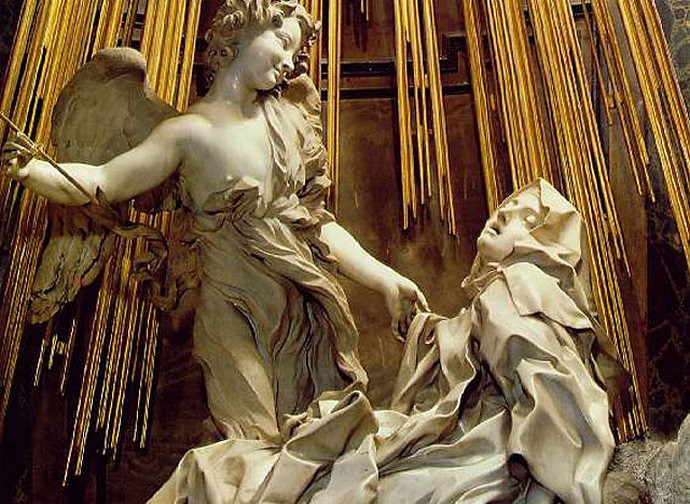Saint Teresa of Avila
“A brilliant and fertile writer, teacher of spiritual life, incomparable contemplative”, Saint Paul VI defined St Teresa on 27 September 1970, the day he proclaimed her Doctor of the Church (the first woman to receive the title).

“A brilliant and fertile writer, teacher of spiritual life, incomparable contemplative”, Saint Paul VI defined St Teresa on 27 September 1970, the day he proclaimed her Doctor of the Church (the first woman to receive the title). Saint Teresa of Jesus, or, from the name of her birthplace, Teresa of Avila (1515-1582), was a giant of holiness, protagonist of the Catholic Reformation thanks to intuitions and works that have not ceased to bear fruit over the centuries. “Teresa without the grace of God is a poor woman, with the grace of God a strength, with the grace of God and many dinars a power”, the founder of the Discalced Carmelites and many new monasteries said about herself. She was able to combine her very rich spirituality with a practical sense, virtues which both proved necessary to carry out the mission to which God called her.
Her reform of Carmel was born out of the fact that the rule had, over time, been mitigated and weakened to the point of making contemplation difficult. Teresa promoted strict observance of reclusion to encourage meditation with God: the spiritual fruitfulness of her rule soon attracted many young women. Meanwhile, an encounter with a young Carmelite now universally known as St John of the Cross (“father of my soul”, she called him) proved decisive in extending the reform to the male branch. But the path was not easy and the saint went through painful trials. In addition to external obstacles, the reform had to overcome various internal resistances, culminating in a dispute between the ‘Calced’ [Shod] and the ‘Discalced’ [Barefoot] Carmelites. The dispute was resolved only in 1580 with the brief of Gregory XIII who established the Discalced in a separate province, a prelude to the elevation to an autonomous order that took place a few years later.
The missionary impulse, which made her travel all over Spain to found monasteries, matured after what she called her “second conversion”, which she experienced at the age of 39. It was at that age that one day, while waiting for Holy Mass, her eyes fell on an image of Jesus covered with wounds. “As soon as I looked at it I was overwhelmingly moved, because it represented how much He had suffered for us: the pain was so great that I felt at the thought of the ingratitude with which I responded to His love, that my heart seemed to break”. Since then she returned to devote herself intensely to prayer, which she had almost abandoned. And she began to live extraordinary mystical experiences until she received the stigmata in her heart (due to transverberation, i.e. the piercing of the heart with a flaming arrow by an angel or Christ himself, which inflames the soul with God's love). The five wounds that she had described were confirmed by an autopsy.
Of great beauty are her teachings on the importance of praying, which means “to frequent with friendship, for we frequent Him who we know loves us face to face”. In one of her most important books, The Interior Castle, written out of obedience, she compared the soul to a castle with seven rooms and talked about the spiritual path to the seventh room where one can experience the indescribable joy of union with God. But how can one begin this journey? By following the first of Teresa's many recommendations: “The door to enter this castle is prayer”.
Patroness of: writers, orphans, people with physical illnesses, people in search of Grace
Learn more
Life of St Teresa, The Way of Perfection, The Interior Castle, by St Teresa of Avila


